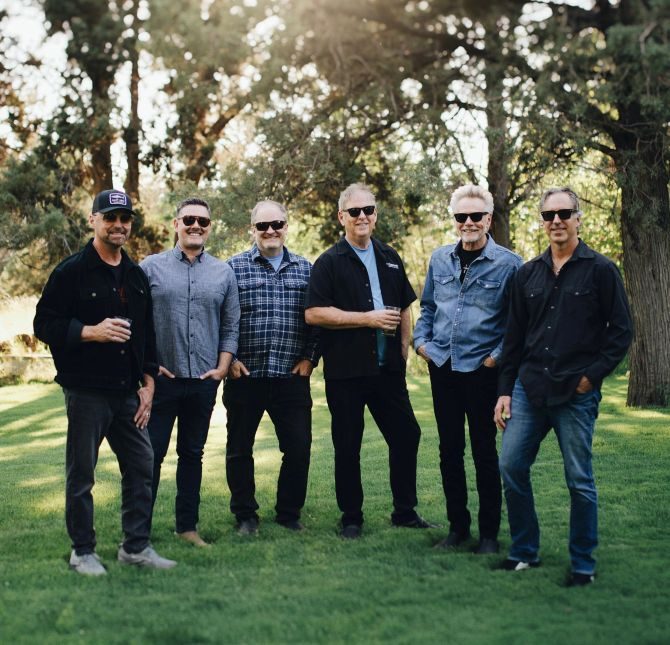OSU-Cascades wants to produce as much energy as it uses
Published 12:00 am Saturday, August 11, 2018

- The new Bend Science Center building has solar panels on the roof, center top, to help create solar energy for use on campus at OSU-Cascades in Bend on Aug. 3, 2018. (Andy Tullis/Bulletin photo)
Having an entire college campus produce as much energy as it uses may sound like a Herculean task, but engineers and design experts at Oregon State University-Cascades have a detailed plan of how to meet that goal.
The university is calling its plan Net Zero, and it will affect every construction project on the OSU-Cascades campus, as well as the school’s current buildings.
Kelly Sparks, OSU-Cascades associate vice president of finance and strategic planning, who is overseeing the university’s campus expansion, said Net Zero is a necessary goal because of its potential positive impacts to Central Oregon’s environment.
“Sustainability is a part of our mission; it’s a part of how we act and interact with our community,” she said. “I believe that for the sustainability of our community that it’s important that we do it and we have an obligation to do it.”
Although the school isn’t producing energy yet, Sparks and Steve Pitman, director of facilities and operations, said the school has plans in place. One option would use ground-source heat pump technology to generate heat or cooling for campus buildings. The system would have large underground pipes circulating water between a cooler spot 40 feet underground and a warmer location 20 feet underground. The pumps can be used as a reservoir to push down heat during summer, or pull heat out during the winter.
Pitman said the university plans to eventually use the system for 100 percent of the campus cooling needs and 30 percent of its heating.
OSU-Cascades is also looking into woody biomass — burning forest debris in a controlled facility — as a heat source. The university also plans to add solar panels on many campus buildings.
Conserving energy will play a large role in expansion plans at OSU-Cascades.
Forty-six acres of the 128-acre OSU-Cascades plot is home to an old pumice mine, the eventual home of the core campus district, which will include student housing and academic buildings. The school plans on using debris from a 72-acre former demolition landfill, also on campus, to help terrace and create a bowl from the 100-foot mine pit, according to Sparks and Pitman.
Sparks said this plan should avoid having to truck in 30,000 loads of clean fill material through Bend’s streets.
“It reduces (the amount of) fuel to drive those trucks, the wear and tear on our community, and frankly, the nuisance of 30,000 trucks that would have to come in to dump,” she said.
The entire campus’ design will be eco-friendly and energy-efficient, as well, and OSU-Cascades has implemented a few Net Zero ideas into its buildings. For example, Tykeson Hall’s roof has a large overhang, which shades the top floors when the sun hits the classroom building in the afternoon.
“While it’s pretty, and it has a unique style and look, it was intentional to shade that upper floor,” Sparks said of the building’s lip. “So at the heat of the day, it keeps the temperature down, so then, you can have passive cooling in the building.”
Furthermore, the university has committed to using energy-efficient windows, LED lighting and local timber products, such as juniper, to construct buildings.
Even the university’s landscaping is conservation-minded.
“If you notice, our landscape is almost entirely native species and drought-tolerant species,” Pitman said. “There’s only two fairly small lawn areas in the campus. You’ll see that continue as the campus grows.”
Future buildings will help capture rainfall, which will be used for watering plants and the few lawns on campus.
Anita Azarenko, OSU associate vice president for capital planning and facility operations, said she was impressed by OSU-Cascades’ efforts.
“I’m kind of jealous over here; we have 150-year-old-buildings that we have to take care of,” she said, jokingly. “It’s a rare opportunity to be able to design a campus below-ground and up. It’s just really exciting to be able to do that, and be able to implement a vision around sustainability.”
Sparks said she hopes other universities follow OSU-Cascades’ lead when it comes to conserving and producing energy.
“We are modeling what may be a necessary future behavior. If anyone can do it, we can do it.”
— Reporter: 541-617-7854;jhogan@bendbulletin.com








